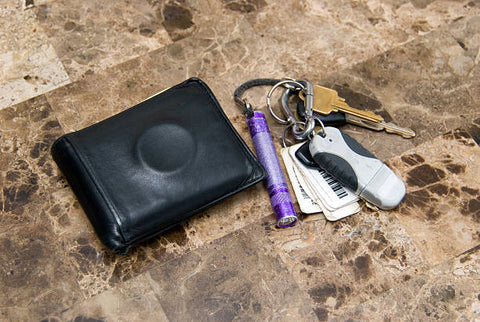Can Condoms Cause UTI
A diaphragm, spermicide, or spermicide-lubricated condom can make you more likely to get a UTI because they all can contribute to bacterial growth.
What is UTI?
A urinary tract infection (UTI) is when your urinary system gets infected (ureters, bladder, kidneys, and urethra). It normally affects females over males and can be very painful, especially if it comes back. Although antibiotics can usually clear up UTIs in a matter of days, there are simple ways to prevent it from happening again.
Firstly, let’s identify some main causes of UTI’s:
Causes of UTIs
Although all of this sounds bleak, there are ways to reduce the risk of getting a UTI.
- Condoms are being used. Be patient! Before you get out your love gloves, please listen! Always Practice Safer Sex. However, using unlubricated condoms may increase your risk of developing UTIs, which could be due to increased irritation of the vaginal area during sexual activity. Your risk can be increased by using spermicide in combination with condoms or diaphragms. Consider trying a condom that is free from spermicide, dyes, and harmful chemicals. Our natural buttercup condoms for example are 100% natural, vegan latex.
- You don't pee after sex - You shouldn't be afraid of getting a UTI but equally, you should also understand it is very possible you could get a UTI. You can reduce your risk by going to the toilet after intercourse, and this will likely flush out any bacteria that might have got into your bladder.
- A common one - You hold on to pee too long. It's easy to be busy. However, not going to the toilet, especially after sex can cause more harm than good. Urine shouldn't sit in your bladder for too long as bacteria can grow if it does.
- Water is super important. It’s a best practice to drink lots of water anyway, for general health reasons. Drinking H2O is especially a great way in this case for flushing out bacteria before they can take hold.
- A lot of sex. The more you have sex, the more likely you are to get a UTI. Basically, it’s just increasing the chances over time that bacteria can move to your urethra via your vagina or perineum, which is the area between your vagina and your anus.
- Wipe from the back to the front - E.coli is the bacteria responsible for most UTIs. The substance can be transported from the rectal area to the urethra. The moral of the story is Always Wipe from Front to Back. Remember that anal sex, oral sex, and sex toys can all cause bacteria in the pee.
- Sugar is a common ingredient in most diets. UTI-causing bacteria love sugar so it is easy to provide a feast for them every time your sweet tooth strikes. You may also experience irritation in your urinary tract from certain foods and drinks, such as coffee, alcohol, or chocolate. This can lead to an increase in UTIs.
- Certain methods of birth control being used - Whilst there are many birth control options that can prevent UTIs, one method can be associated with UTIs, and that is the diaphragm. The diaphragm position puts pressure on the bladder, which could increase the risk. The good news is: There are many other great birth control options if this is a concern.
Safety Tips to avoid UTI
UTIs are more prevalent in females than they are in men. Because a female's urinary system is smaller than a male's, bacteria can travel more easily to the bladder.
The urethra is also closer to the anus, allowing bacteria from the anus more easily travel up the urinary tract and potentially cause an infection.
These risks can further be increased by penetrative sex, which forces bacteria into the urethra.
Although there is no 100% safe way to have sex with someone suffering from a UTI or other sexually transmitted diseases, these simple strategies can help reduce the likelihood of getting it in the first place.
Some other things to consider:
- To flush out bacteria, you should urinate both before and after having sex
- Avoid any sexual activity that could spread bacteria from your anus to your vagina or urethra. Anal sex users should use condoms. It is also recommended to always replace them with a new condom after penetration of the anus or any other body part.
- After urinating, or having bowel movements, wipe yourself from front to back. This will prevent bacteria from spreading.
- To clean your urinary tract, drink plenty of water. A person who is dehydrated is at greater risk of developing a UTI.
- Talk to your doctor about other options. Many people suffering from allergies to condoms or diaphragms can contract UTIs when not careful.
- Consider using a probiotic. A small number of clinical trials suggest that probiotics can help prevent harmful bacteria from growing out of control.
- Before you stimulate a partner, wash your hands. While this will not completely prevent UTIs, it can help reduce the chance of accidentally introducing bacteria to the urethra.
- After touching your partner’s body parts, always wash your hands.
A sudden increase in sex with a partner, especially with a new partner can cause a UTI. This is sometimes called honeymoon cystitis by doctors.
Can you get a UTI from latex?
Condoms made of non-lubricated latex may cause friction and increase irritation to the women during sexual intercourse. This could increase the risk of developing a UTI.
What triggers UTI?
Bacteria can cause UTIs by entering the urethra, where urine flows from the body to the outside. The bacteria can reach the urethra through various methods, including sexual contact, poor hygiene, or pre-existing bladder conditions.
Can condoms irritate the urethra?
Specific birth control methods, such as condoms, diaphragms, or spermicides, can irritate the urinary tract, particularly at the urethra opening. Infected tissues are more susceptible to infection.
Is UTI going to go away by itself?
UTI is typically treated with antibiotics, however, they certainly can be treated with natural methods such as flushing your system with water. It can be risky not to treat a confirmed UTI using antibiotics so make sure you weigh up all the risks and if anything worsens, get professional help as soon as possible.
How do I get rid of a UTI within 24 hours at home?
It's tempting to cut back on your water intake when you feel the first signs of burning after going to the bathroom.
Here are some quick suggestions worth trying if you want to do all you can:
- Drink Cranberries.
- Take a sick day.
- Take a look at Probiotics.
- Eat Vitamin C.
- Garlic is a good choice.
- Maintain good hygiene.
How long does UTI last?
Most UTIs are treatable. Most bladder infection symptoms disappear within 24 to 48 hours of treatment, although it may take up to a week for kidney infections to disappear.
What are the signs of a UTI
UTI symptoms:
- You feel a burning sensation when you pee.
- An intense or frequent urge to pee.
- Pee that is cloudy, dark, bloody or unusual-smelling.
- Pressure or pain in your lower abdomen or back.
- Feeling tired or unsteady.
- Chills or fever are signs that infection has reached your kidneys.
Is it possible to get a UTI through your fingers?
It is easy to get a bacterial infection in the urinary tract. Bacteria from the vaginal, genital and anal areas can enter the urethra and travel to the bladder. The bacteria from your partner's genitals, anus, or sex toys can enter your bladder and the same is said from your hands, fingers and nails. Always ensure you wash them before touching your partner's body.
Can sperm inside you cause a UTI?
Sexual activity can result in UTIs, and germs from other areas can travel to the urethra (e.g., from the vagina). Spermicides may kill good bacteria, which can protect you against UTIs so consider opting for condoms that do not contain spermicide.
Is it possible for condoms to cause burning sensations?
Particularly latex condoms can cause itching, swelling, and burning. To treat allergy symptoms, you may want to take an antihistamine pill. You may need urgent medical attention if you have severe allergies, and some lubes can also cause an allergic reaction.
Can condoms irritate?
After using a condom, some people feel itchy, red, or swelling, and these are the symptoms of a latex allergy. Latex comes from the milky sap of rubber trees, and many commercial and medical products use it, including condoms.
What is a Silent UTI?
Silent UTIs are just like regular UTIs but without the usual symptoms that show our immune system is fighting the infection. Silent UTIs are more common in those with weaker immune systems, particularly the elderly. These can be worrying if left and not treated from the beginning.
What if I don't see a doctor to get UTI antibiotics?
Are prescriptions or doctor visits required for antibiotics to be prescribed for UTI? Antibiotics are only available on prescription in most locations. To obtain a prescription, you will need to speak to a doctor, through personal appearance, by phone or via video. If you choose not to get antibiotics, you may be able to treat yourself by taking better care, improving your hygiene and drinking more water. If the situation worsens, get professional help as early as possible.
What Kind of Condoms Should I Buy?
Although there is no definitive rule about who should use different condom sizes, the following guidelines will give you an idea of what condom you should buy.
How can I determine which condoms I should buy?
A regular standard condom is sufficient for most people. Some people will try several brands and types before finding the right one, and others may be happy with any brand. There are some reasons why you might choose to use a particular type of condom.
First, look for something that works for your body and skin type. If you're interested in a clean, body-safe condom with few ingredients, look for condoms that are 100% natural, vegan latex with no spermicide, dyes, fragrances or other chemicals.
Condoms made from latex (also known as rubber) are the most popular type of condom. If your partner is allergic to latex, you can use latex-free. These condoms are made out of soft materials such as polyurethane or polyisoprene and don't contain any latex. These condoms are just as effective in preventing pregnancy and STDs as latex condoms.
There are many sizes available for condoms, and condoms can be stretched to fit many different penises. Most people can use standard condoms without any problems, and others might require larger or smaller condoms.
Too tight condoms can cause pain or break, while too loose condoms can fall off and cause excess semen (cum). Choosing the right size condom is important, and comfortable sex can make it more enjoyable and less painful.
Condoms can have special lubricants or textures to increase the sensation and make sex last longer. Although these extra features can make condoms more enjoyable and pleasurable, it is not always possible to feel the difference between standard condoms.
Another consideration is how you will store them, carry them and open them. Traditionally, many condoms will be in a wrapper that finds itself in a bag, wallet or pocket. The problem here is apart from the heat, friction can damage the condom and wear it down. Sharp objects such as keys can pierce the packaging and damage the condom down making it less effective. Fortunately, there are now many condoms that are easy to open, always right side up wrappers with no tear packaging. They can also be stored in a tin, reducing any potential problems of them being damaged.
How do I know what condoms to buy?
To determine which condom works best for you:
- Measure your penis when it is fully erect to get the correct size.
- Make sure it’s compatible with your skin type, be it sensitive or normal.
- Opt for an easy open, no tear packaging where at all possible. It will reduce anything going wrong when you need it.
- Look for 100% natural, vegan latex with silicone oil lubricant if possible and it works for you. We have ultra-thin condoms that can be stored in a tin.
Take Your Measurements
The size of the erect penis will determine your condom size.
- Length - Measure the length of the erect penis with a ruler or tape, with one part placed on the pubic bone and the other at the tip of the penis.
- Width - Wrap with a piece of string around the thickest part of the erect penis. Then measure the string length using a tape measure.
After taking these measurements, compare different brands to find the condom that best matches your erect penis.
Is the material important?
Condoms come in many sizes and shapes. They also have different materials like latex, polyurethane and lambskin.
Condom manufacturers use latex for the majority of their condoms. However, some brands offer non-latex options for those who don't like latex or have allergies.
Condom Types
You may want to buy a few condoms to test them out after you've chosen a few brands that suit your penis size. It may be helpful to test several condoms of different materials to find the most comfortable one.
There are other condom features you may be interested in, aside from size.
- Design - Condoms come in a variety of textures and shapes. You may prefer one to the other.
- Built-in lubrication - Many condom brands use silicone oil lubricant. These materials can increase your sensitivity and pleasure, as well as that of your partner.
- Easy opening - Often an overlooked element but something that can make or break the entire mood. If you find yourself worried about damaging the condom when ripping the packaging, consider a condom that uses "buttercup" packaging that's easy open and ensures the condom faces the right way up each time.
To make your partner feel more comfortable and have a better experience, you can also add additional lubricant after placing your condom on.
How to use a condom properly
Condoms work best when properly used. Here are some tips to help you use condoms correctly:
- Make sure to check the expiration date of the package. Condoms that are past their expiry date will be a less effective and more likely break.
- It is vital to ensure that the condom remains intact. Condoms kept in purses or wallets are at risk of being damaged. You should ensure that the wrapper remains intact. Do not use a condom that is ripped or damaged.
- Carefully remove the wrapper. Avoid pulling the wrapper with your teeth. If you struggle with this, consider using an easy open wrapper style.
- To roll the condom over your penis, ensure that the rim faces the outside.
- Place the condom tip on the head of your erect penis. Use your fingers to press the excess air out of the end. This will allow you to collect your semen.
- Roll the condom along the shaft until it reaches the base of your penis.
- Apply a small amount of silicone or water-based lubricant to any condom that does not have lubrication.
- After you have ejaculated, hold the condom's base while pulling it out. This will keep it from falling off.
- Remove the condom carefully, tie a knot at its open end and toss it in the trash.
How old do you have to be to buy condoms?
Any pharmacy or supermarket can sell condoms without having to ask for identification. Check in your country and state the legal age but for many places, the consenting age for sexual activity is 16 years, and this applies regardless of the gender or gender identity of the purchaser.
Why are female condoms not popular?
Male condoms are more popular than female condoms, and this could be because they are less widely available, costlier, or simply because women prefer them. In general, condoms for females are not available in drug stores or grocery stores.
How do I get condoms for 15 years old?
It is possible to buy condoms at any age. The most common places to purchase condoms are drugstores, Planned Parenthood health clinics, and community health clinics.
Are condoms too embarrassing to buy?
It can be awkward for some people to go into a store and buy condoms. However, your health is more important than a bit of embarrassment. In fact, if you reframe it, you can see it as an empowering exercise.
Do condoms expire?
Many condoms come with expiration dates printed on their packaging, usually five years from the date they are manufactured. It is essential not to use condoms after the expiration date has passed. They will begin to degrade and be less effective in preventing STDs or pregnancy. Avoid using condoms after the expiration date. Please do not use a condom that appears dry, sticky or stiff out of its package.
Which condoms should I buy for the first time?
It can be nerve-wracking to try out sex for the first time. So make sure you choose a reliable and easy-to-use condom and if possible, practice putting them on and taking them off. The more prepared you are before having to use them, the smoother the process will most likely go when you need them in the heat of the moment.
What are the cons of female condoms?
Couples may not like the view of the outer ring or find the condom too loud during sex. Another negative for women is discomfort when putting in a condom, and Itchy, burning or painful reactions can occur.
How to use a condom without being awkward
Condoms are the only contraceptive that protects against unwanted pregnancy and STIs. However, they often receive a bad rap, and they can appear to be interruptions, or people may feel awkward about using them.
Here are a few ideas for how to use a condom when the moment arises.
- Get the condom ready
It's the digging in your bag for condoms or looking in your bedside table drawer that is a passion killer. So that you are ready for the inevitable, make sure you know where you have your condoms and make sure they are easily accessible. “Everything has a place and a place for everything”. Now and again, make sure to check the date on condoms. A condom that isn't up-to-date is not advisable as it is more likely to break.
- Be aware of what you are doing
Practice, practice, and practice. If you want to be able to put a condom on quickly, you can’t expect to do it perfectly the first time. You should practice putting it on and also using a condom while masturbating if you have a penis. This will at least ensure that you are ready to have sex with your partner when the time comes and know the basics of putting it on and also removing it carefully.
- Don't rush
It is essential to roll the condom down to the base of the erect penis to reduce the chance of it breaking or slipping off during sex. Enjoy a lot of foreplay and take your time.
How can you maintain your composure when you put on a condom?
Firstly, if you think of it as a big deal, then it will become a big deal. It’s perfectly normal and natural for people to take a moment and put on a condom. Sure, there are some fancy ways of multi-tasking like kissing each other, also putting the condom on but these come with time and experience. For the few seconds it will take to put the condom on correctly, it will be forgotten just as quickly when the real fun begins.
Most common mistakes when using a condom
- Don't forget to check the condom packet for damage. Condoms are easily damaged. Condoms can also get damaged by heat, which can cause them to become warm. Having one on you is a good habit but be aware they can easily get damaged if held in your pocket or wallet due to the friction. It's best practice to replace it every month. Damaged condoms won't protect against STIs or pregnancy.
- Don't forget to check the expiry dates. Condoms should always have an expiry date printed on their wrappers. The amount of protection will no longer be adequate if the condom is expired.
- Don't be careless when you open the condom wrapper. When you open the wrapper, feel for the condom inside. Do not use scissors or any sharp object to open condoms as it’s one of the most common ways to damage them.
- Before sex has begun, a condom must be worn before you have any physical contact. This would mean before sex and before any of your genitals contact your partners. You are not protected against STIs and pregnancy if you only put on a condom before you ejaculate.
- Hold the tip while applying the condom to the penis. It is essential to squeeze the end to remove any air. The condom will likely break during play if you don't.
- Flipping the condom upside down and then flipping it over. This is a standard error. It is essential to throw out the condom and replace it with a fresh one. The condom's outside will touch the penis and expose your partner to the possibility of getting pregnant and STIs.
- Don't take the condom off too quickly. Condoms should be used whenever your genital and anal areas come in contact.
- Ensure you hold the condom base when removing the penis. Otherwise, this could cause the condom to not stay in place, which can lead to STIs and pregnancy. As the penis is being withdrawn, gently hold the condom with your fingers.
- Use oil-based lubricants in conjunction with condoms. While using lubricant can be a good idea, make sure it is water-based such as HALLELUBEYAH. Some other products, particularly those not for sex, can be oil-based and cause condoms to break.
- Don't use a condom too small or too large. It might fall off if it is too big, or it may tear if it is too small. Condoms come in a variety of sizes, so you're sure to find the one that fits you and your partner.
- Change condoms if needed during sex. You should always use a new condom if you're switching from anal to vaginal or vice versa. Infection can be caused by bacteria introduced from the rectum to the vagina.
- Careful using condoms with sex toys. If you and your partner share sex toys like vibrators, it is a good idea to get a new condom each time. If sex toys are not covered and shared, they can transmit STIs.
What happens if you don't pinch the tip of a condom?
Pinching the tip of the condom in essence ensures there is not air trapped inside when the condom is rolled down the penis. This in turn makes sure it will not cause the condom to rip during intercourse. It also allows adequate space for the cum to go.
Why is it so hard to put a condom on?
The most likely reason for the condom seemingly being difficult to put on the penis is either it’s not the correct size, or simply you haven’t practiced the basics properly. Spend time learning how to apply the condom correctly, and overtime this will become normal and a natural part of the process.
Who should use the condom?
Male condoms are worn over the erect penis during sex to stop semen (sperm) from entering the female's vaginal area when the man ejaculates. When the penis is hard (erect), and before it touches your partner's skin, you should put on the condom. It’s also a best practice for protecting against STI’s.
Are condoms easier to use?
Condoms can be easily obtained and used. Condoms can help prevent STDs and pregnancy, and condoms can make sex more enjoyable with less risks -- and that ensures you can get out of your head and really enjoy yourself in the moment. One of the easiest innovations is the use of a condom in a tin. This way, you can access them easier, always have them right side up, and know they are always protected and safe to use.
What is the name of condoms used by women?
The female condom, also known as an internal condom, is a contraceptive device used to prevent sperm from entering the uterus, protecting against pregnancy and sexually transmitted diseases (STIs).
Are ultra-thin condoms prone to breaking?
Many people prefer ultra-thin condoms because they offer greater pleasure and sensation. There is no greater risk of them breaking than other condoms. In fact, we have our own ultra-thin, vegan buttercup condoms you must try.
Why are some condoms flavored?
- Condoms with flavored coatings are best used for oral sex.
- Flavor is added to mask the taste of latex, making oral sex more enjoyable.
- Flavored condoms may be just as safe as unflavored condoms in terms of pregnancy prevention, but beware that added sugars in the flavored coating could contribute to a vaginal yeast infection if they're used vaginally.
- Sex is a fantastic, fun thing and should be embraced.
If he pulled out a condom, can I still get pregnant?
There is always the risk of getting pregnant regardless of what contraception you use. However, the risks are much smaller when using a condom. The male condom is an effective method to prevent pregnancy.
What are "dotted" or "ribbed" condoms exactly?
Condoms with stippled dots or lines on the outside are designed to add sensation and excitement to the sexual experience. Condoms come in a variety of styles and dotted condoms are placed in a pattern to potentially enhance sexual pleasure.
How Long Can I Keep a Condom in my Wallet
Ah, the trusty wallet – our faithful companion through thick and thin, carrying everything from cash to cards and, for some, even a condom.
But how long can a condom safely reside in the depths of your wallet before it's time to say goodbye?
Is My Wallet A Good Place To Keep A Condom?
First, it's essential to address the common misconception that your wallet is a suitable long-term home for condoms. While it may seem convenient to have protection on hand at all times, your wallet is NOT the ideal environment for storing condoms.

Why? For starters, wallets experience a fair amount of wear and tear. From constant bending and folding to exposure to heat and moisture, your wallet subjects condoms to less-than-ideal conditions. Modern condoms are a scientific marvel, but over time, leaving a condom inside a wallet is likely to lead to damage or deterioration of the condom, rendering it less effective when you need it most. And while most condoms have a 4 to 5 year shelf-life, condoms do eventually expire.
What Carrying Condoms Means To Your Partner
Perhaps the best reason to carry condoms but NOT in your wallet, however, is simply that it doesn't give off the best vibes to your prospective partner. Don't get me wrong. Using protection is a strong sign of respect for your partner. But if you want to show him or her that you really care, be proudly prepared and don't pull one of of your wallet. Because - as a man or a woman - when you responsibly carry condoms and insist on using body-safe condoms, you're teaching your partner how to treat you.
How Long Can I Keep A Condom In My Wallet?
Ok, so assuming you don't have anywhere else to keep a condom when you're heading out, how long can you keep a condom in your wallet before it's time to retire it?
The general consensus is that condoms should not be stored in wallets for extended periods – ideally, no longer than a few days, if not just a few hours. Any time a condom is left in a wallet - particularly a man's wallet that sits in his back pants pocket - increases the risk of damage to the condom and decreases its effectiveness.
Even though the wrapper may look fine, the condom itself might be damaged. Unfortunately, condoms kept in a wallet can easily become worn and break.
The Smartest Way To Carry Condoms
The best way to make sure your condoms are protected from damage and easily accessible when you're out on the town: consider investing in a discreet condom-carrying tin or case. A condom-carrying tin is designed specifically to keep your condoms - usually up to 4 condoms at a time - safe and secure.
If a condom case isn't your style, you can also stash condoms in your front or shirt pocket, a purse, or a compartment in your bag. Just be sure to avoid exposing them to sharp objects, overly tight spaces, or extreme temperatures that could compromise their integrity. Keeping condoms in the glove compartment or trunk of your car sounds like a good idea, but do not store them in there for extended periods as the temperature (or shifts in temperature) will likely impact and degrade the condom as well.
Most individual condom packaging won't give you much protection, so be mindful to not be too rough with it. Buttercup Condoms offer added protection from damage because they're sealed inside a recyclabe, easy-open plastic buttercup wrap where the condom sits. Not great for wallets, but ideal if you're just tossing it in your pocket or in a bag.
How Do I Store Condoms Safely?
Generally, store your condoms in a dry, cool location, away from sharp objects and direct sunlight. Condoms can be damaged by heat and moisture no matter where they are stored. Around room temperature is the best, but condoms should not be kept higher than 100°F (there's no formal guidance on the minimum temperature at which to store condoms, though the general consensus is to not expose them to temperatures below 32 °F).
How Can I Tell If A Condom Is Damaged Or Expired?
It is fairly easy to determine if condoms have been damaged or are expired.
1. Check The Expiration Date
Even if you just purchased the condoms, always check the expiration date on the individual condom before use (yes, each condom has an expiration date printed on the wrapper). Like most products, condoms are not meant to last forever, and expired condom are more likely to break.
2. Examine The Integrity Of The Packaging
To confirm the packaging of the condom has not been compromised, press on the wrapper—you should feel a little cushion of air, indicating the wrapper is sealed and there are no air holes. Assuming the condoms are lubricated, you can also feel for the slippery feeling of the lube. Another little trick is to check if any lubricant has leaked out; if it has, the condom will feel slippery and the box where they are stored may have dark, oily stains.
For condoms in buttercup wrappers, you won't be able to press the wrapper, but you can quickly inspect the rim of the buttercup to make sure there are no gaps in the seal between the label and the plastic cup.
3. Feel The Texture Of The Condom
A healthy condom will feel and even smell fresh when it is first opened. Condoms subject to extreme temperatures (hot or cold) or whose wrappers are damaged exposing the condom to air, however, will appear dry, making it more likely to break or leak during use.
Of course, once you've used a condom, you should NOT clean it and use it again. Condoms are only good for a one-time use.
What Do I Do If I'm Not Sure My Condoms Are Still Good?
This one is easy. If you're just not sure whether your condom is safe to use, throw it out and buy new ones.
Aside from the fact that you'll be worried and unable to enjoy the experience, it is never worth the risk of pregnancy or passing along / contracting an STI to use what you suspect is a degraded condom. Don't do it.
Do I Need To Always Have A Condom With Me?
Who knows when you may need a condom, right? Well, not exactly.
While men are optimistic and hopeful, they often don't know exactly when they're going to have sex (and hence, stick a condom in their wallet just in case). For women, it's often the opposite; we usually know when we're going to have sex - especially if it is the first time with someone new. Yes, there are things women do when they know they're going to have sex - and one of those is to make sure we have body-safe condoms at the ready!
Carrying and using condoms makes sex much more enjoyable knowing you are safe and removes any unwanted fear knowing you are always prepared. This is one of the most fantastic reasons to embrace your sexual empowerment and to buy / carry condoms.
_______________________________________
In the world of safe sex, it's important to be prepared while also taking care of your protection. So, next time you reach for your wallet, remember to give your condoms the care and consideration they deserve – after all, they're there to keep you safe and sound in the heat of the moment!
____________________________________________












